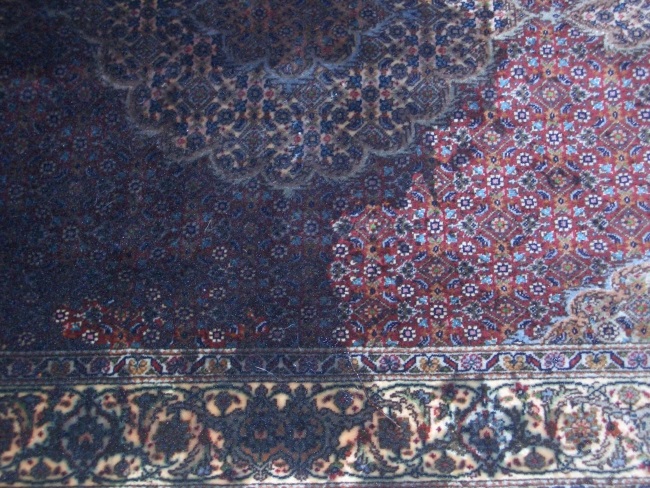SURREY, EAST SUSSEX & GREATER LONDON
Country House Carpet Care is your local oriental rug cleaning experts, including the cleaning of carpets and upholstery in the Surrey, East Sussex and Greater London area.
Oriental Rug Cleaning by Country House Carpet Care.
Confusion results from the common use of the phrase “Oriental rug” as a generic label for nearly any variety of patterned carpeting. Furniture stores, carpeting dealers, some large home improvement stores (and even some rug dealers) sell a constantly changing mix of machine-made and hand-made rugs, which they often lump together and advertise as “Oriental rugs”. Often the salesperson in such a store has little or no knowledge about hand-knotted rugs, and does not clearly distinguish among the machine-made copies and the genuine Oriental rugs in their stock.
An “Oriental rug” is a piled or flatwoven fabric hand-knotted in one of the traditional weaving areas of the Middle or Far East. Genuine “Oriental rugs” come from Afghanistan, China, India, Iran, Nepal, Pakistan, Tibet, Turkey, some of the southern territories of the old Soviet Union (like Azerbaijan or Armenia), Balkan countries like Romania and Albania, and some North African countries like Morocco and Egypt. Genuine Oriental rugs are not made in Belgium or anywhere else in Western Europe or in the United States (there are hand-woven rugs made by native Americans in the American Southwest, but these are called “Navajo rugs” or “American Indian rugs”). “Axminster”, “Wilton”®, “Karistan”® and “Couristan”® rugs are rugs made by machine in Oriental rug designs; they are not “Oriental rugs”. No genuine Oriental rugs are made of nylon or polypropylene.

Adding to the confusion is the appearance of several varieties of hand-made rugs that are not hand-knotted rugs. Easiest to mistake for hand-knotted rugs are the hand-tufted rugs from China and India. Hand-tufted rugs are made using a “gun”: a hand-operated tool that punches strands of wool into a canvas stretched on a frame. The design of the rug is drawn on the canvas, and the worker fills in the pattern with the appropriate colour wool.
When the rug design is fully piled (and this can take as little as three or four days for a 9′ x 12′ carpet), the rug is removed from the frame and a scrim fabric is glued to the back of the rug. It is only the glue on the back of the rug that holds the wool pile in place–yarn is not knotted over warps as with a real Oriental rug. Because the tufting process does not produce the fringe that is normal to a hand-woven rug (where the fringe is the end of the warp strings that run from one end of the rug to the other), separate fringe (usually woven as a tape) is often glued or sewn to the ends of a tufted rug.
To ensure the safe cleaning of your “Oriental Rug” ask Paul at Country House Carpet Care to give you a quote on 01424 432625
